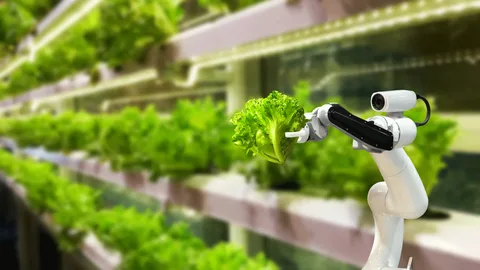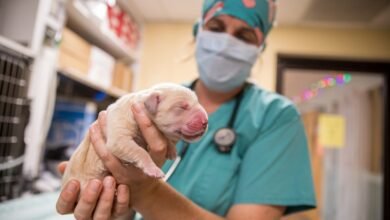The Future of Sustainable Agriculture and Food Security

Introduction
As the global population continues to grow, the demand for food is escalating, presenting a critical challenge for sustainable agriculture and food security. With environmental concerns, climate change impacts, and the need for resource-efficient practices, the future of agriculture is at a crossroads. This article explores the innovative trends and strategies shaping the future of sustainable agriculture and its role in ensuring global food security.
Precision Agriculture and Smart Farming
The future of sustainable agriculture lies in precision farming techniques that leverage technology for optimized resource use. Precision agriculture employs sensors, drones, and satellite imagery to gather data on soil health, crop growth, and environmental conditions. Smart farming integrates this data to make informed decisions, leading to precise irrigation, targeted fertilization, and reduced waste.
Vertical Farming and Controlled Environment Agriculture (CEA)
Vertical farming is emerging as a sustainable solution to limited arable land availability. In vertical farms, crops are grown in stacked layers or vertically inclined surfaces. Controlled Environment Agriculture (CEA) further enhances this approach by regulating temperature, humidity, and light to create optimal growing conditions. These innovations minimize land use, conserve water, and reduce the environmental impact of traditional farming.
Sustainable Crop Practices and Agroecology
Agroecology promotes sustainable crop practices that mimic natural ecosystems. This includes crop diversification, polyculture, and agroforestry to enhance soil health, reduce pests, and increase resilience to climate change. By embracing agroecological principles, farmers can achieve higher yields while preserving biodiversity and minimizing the use of synthetic inputs.
Climate-Resilient Crop Varieties
The future of agriculture requires crops that can withstand the challenges posed by climate change. Research and development in breeding climate-resilient crop varieties are crucial. Traits such as drought tolerance, heat resistance, and resistance to pests and diseases are being prioritized to ensure stable yields under changing environmental conditions.
Digital Agriculture Platforms and Blockchain
Digital agriculture platforms are revolutionizing the way farmers manage their operations. From crop monitoring to market access, these platforms provide real-time data and insights. Blockchain technology is also making inroads, enhancing transparency in the food supply chain. By enabling traceability, blockchain ensures that consumers can verify the origin and sustainability of the food they purchase.
Water-Efficient Irrigation Technologies
Water scarcity is a significant concern in agriculture. The future of sustainable agriculture involves adopting water-efficient irrigation technologies. Drip irrigation, precision sprinklers, and soil moisture sensors help optimize water use, reducing waste and improving the overall efficiency of irrigation practices.
Circular Agriculture and Waste Reduction
Circular agriculture emphasizes the reduction of waste and the efficient use of resources. This involves recycling agricultural by-products, adopting circular economy principles, and minimizing the environmental impact of farming practices. From composting organic waste to repurposing agricultural residues, circular agriculture contributes to a more sustainable and resilient food system.
Biological Pest Control and Integrated Pest Management (IPM)
Moving away from chemical-intensive pest control, the future of agriculture embraces biological pest control and Integrated Pest Management (IPM). Beneficial insects, such as ladybugs and parasitic wasps, are enlisted to control pests naturally. IPM combines biological, cultural, and mechanical control methods to minimize the use of chemical pesticides while maintaining crop health.
Sustainable Livestock Farming Practices
Sustainable agriculture extends to livestock farming, emphasizing ethical and environmentally friendly practices. This includes pasture-based systems, rotational grazing, and the reduction of antibiotics in animal feed. Sustainable livestock farming aims to balance the nutritional needs of a growing population with the well-being of animals and the preservation of natural resources.
Education and Knowledge Sharing
The future of sustainable agriculture relies on education and knowledge sharing. Farmers need access to information on the latest sustainable practices, technologies, and research findings. Agricultural extension services, online platforms, and community initiatives play a crucial role in disseminating knowledge and empowering farmers to adopt sustainable approaches.
Conclusion
The future of sustainable agriculture is characterized by innovation, technology integration, and a commitment to environmental stewardship. By embracing precision agriculture, vertical farming, agroecology, and other sustainable practices, the global food system can evolve to meet the challenges of a growing population and changing climate. Collaboration among governments, farmers, researchers, and consumers is essential to create a future where agriculture not only feeds the world but does so in a way that preserves the planet for future generations.



